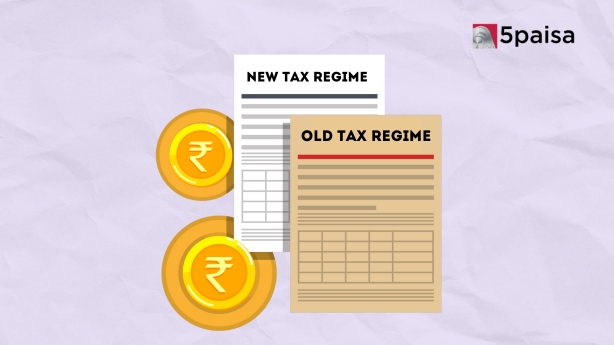3 Technologies Disrupting Finance in 2025: AI, Blockchain & Big Data Revolution
Tips on How to Retire at 40

You probably make more money in your 40s than you did in your 20s or 30s, and you have more money to invest. You have another 15 to 20 years to save. You still have enough time to build up a substantial corpus, even though you must set aside a larger investment fund each month in your 40s than you did in your 30s.
The age at which you intend to retire, inflation rate, significant financial goals and obligations, savings and investments, current income and spending, and—above all—healthcare costs are all important considerations when making retirement plans. Because of this, it's critical to approach retirement planning thoughtfully.
Retiring at 40 might sound like a pipe dream, but with the rise of the FIRE (Financial Independence, Retire Early) movement, more people are making it a reality. In this guide, we'll explore the ins and outs of early retirement and provide ten actionable tips to help you retire in your 40s.
1. Defining Your Retirement Goals
Before you embark on your journey to early retirement, take some time to define what retirement means to you. Will you be traveling the world, pursuing a passion project, or simply enjoying more time with your family? Visualizing your ideal retirement lifestyle will provide a roadmap for your financial planning.
For instance, if you plan to travel extensively, you'll need to budget for transportation, accommodation, and leisure activities. If entrepreneurship is on your radar, consider the startup costs and potential revenue streams.
2. Calculating Your Retirement Needs
Creating a detailed retirement budget is crucial to understanding how much you'll need to save. Consider all your expenses, including housing, utilities, food, healthcare, and leisure activities. Don't forget to factor in inflation and unexpected expenses that may arise.
Healthcare costs, in particular, can vary significantly depending on your age, health status, and insurance coverage. It's essential to plan for potential medical expenses in retirement.
3. Assessing Feasibility
Once you have a clear understanding of your retirement goals and financial needs, assess the feasibility of retiring in your 40s. Consider your current age, existing savings, income, and saving rate. Run different financial scenarios to see if early retirement is within reach.
Take into account variables such as market performance, inflation rates, and potential lifestyle changes. For example, if you plan to have children or buy a home, these factors could impact your retirement timeline.
4. Evaluating Your Savings Rate
Review your income and savings rate to ensure you're on track to meet your retirement goals. Aim to save a significant portion of your income, ideally 25% to 50% or more, to accelerate your journey to early retirement.
Explore different savings vehicles, such as employer-sponsored retirement plans, IRAs, and taxable brokerage accounts. Maximize your contributions to tax-advantaged accounts to minimize taxes and maximize growth potential.
5. Exploring Alternative Income Sources
In addition to traditional savings and investments, consider alternative income sources to supplement your retirement income. Side hustles, freelance work, rental properties, or passive income streams can provide additional financial security in retirement.
Research potential income-generating opportunities that align with your skills, interests, and lifestyle preferences. For example, if you're a skilled writer, you could freelance for online publications or create digital products to sell.
6. Diversifying Your Investments
Diversification is key to managing risk and maximizing returns in your investment portfolio. While stocks historically offer higher returns over the long term, they also come with greater volatility.
Consider diversifying across asset classes, including stocks, bonds, real estate, and alternative investments like commodities or peer-to-peer lending. Asset allocation should be tailored to your risk tolerance, time horizon, and financial goals.
7. Minimizing Taxes
Tax optimization is an essential component of early retirement planning. Explore tax-efficient investment strategies and retirement accounts to minimize your tax burden in retirement.
For example, contributing to a Roth IRA allows for tax-free withdrawals in retirement, while traditional retirement accounts provide tax-deferred growth. Consider tax-loss harvesting, charitable giving, and other strategies to reduce your tax liability.
8. Staying Informed
Stay abreast of financial news, market trends, and regulatory changes that may impact your retirement plans. Knowledge is power when it comes to making informed decisions about your finances.
Follow reputable financial publications, blogs, and podcasts to stay informed about investment strategies, retirement planning tips, and economic trends. Engage with online communities and forums to share knowledge and learn from others' experiences.
9. Seeking Professional Guidance
Consider working with a financial advisor who specializes in early retirement planning. A professional can provide personalized guidance, help you navigate complex financial decisions, and keep you accountable to your goals.
Look for a fee-only advisor who has experience working with clients pursuing early retirement. Make sure they understand your unique financial situation, risk tolerance, and long-term objectives.
10. Maintaining Financial Discipline
Achieving early retirement requires discipline, perseverance, and a long-term perspective. Stay committed to your savings and investment plan, even when faced with temptation or market volatility.
Automate your savings and investment contributions to ensure consistency and avoid emotional decision-making. Regularly review your progress, adjust your strategy as needed, and celebrate milestones along the way.
Conclusion
Retiring in your 40s is an ambitious goal that requires careful planning, discipline, and perseverance. By defining your retirement goals, calculating your financial needs, exploring alternative income sources, and optimizing your investment strategy, you can set yourself up for success. Seek professional guidance, stay informed about financial trends, and maintain financial discipline to achieve your early retirement dreams. With dedication and strategic planning, retiring at 40 can become a reality.
- Flat ₹20 Brokerage
- Next-gen Trading
- Advanced Charting
- Actionable Ideas
Trending on 5paisa
Personal Finance Related Articles
Disclaimer: Investment in securities market are subject to market risks, read all the related documents carefully before investing. For detailed disclaimer please Click here.

 Tanushree Jaiswal
Tanushree Jaiswal
 Sachin Gupta
Sachin Gupta




